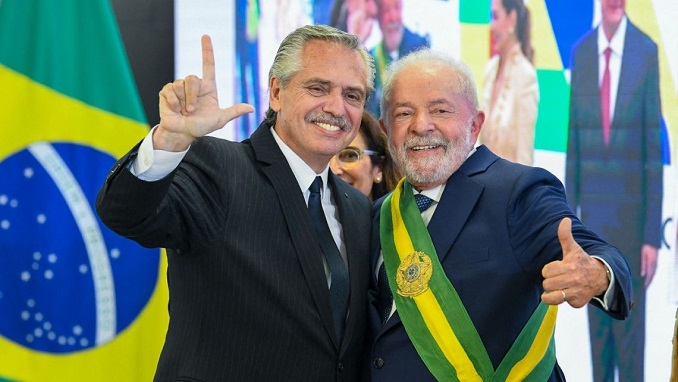
Argentina and Brazil, South America’s two biggest economies, are reviving an often-discussed plan that would face numerous political and economic hurdles by renewing discussions on forming a common currency for financial and commercial transactions.
In a move that could eventually create the world’s second-largest currency bloc, they’re reportedly in the preliminary stages of the preparatory work on a new currency – which Brazil suggests calling the “sur” (south) – that would at first run in parallel with the Brazilian real and Argentine peso and that could boost regional trade, reduce reliance on the US dollar and counter its influence in the region.
Brazil and Argentina are planning to discuss and officially announce the common currency project – which will initially start as a bilateral project – at a summit in Buenos Aires this week and will later extend it to invite other Latin American nations to join it.
Argentina’s Economy Minister Sergio Massa explained that they’d discuss studying the mechanisms for trade integration and the parameters – which include everything from fiscal issues to the size of the economy and the role of central banks- needed for a common currency.
He pointed out that it would be only the first step on a long road that Latin America must travel, noting that the process might take years considering the fact that it took Europe 35 years to create the euro.
The idea of a common currency for South America’s two largest economies has been discussed for decades and options were considered to coordinate their currencies, but the idea resulted in little practical progress due to persistent macroeconomic imbalances of both countries and recurrent political obstacles to the idea, including the strong pushback of Brazil’s central bank.
There is greater political backing for the project now that the two countries are both governed by leftwing leaders and, according to a Brazilian government official, the latest negotiations were initiated by Buenos Aires, but another official stressed that Brazil’s agreement was no more than a nod for talks to take place and that discussions – which aren’t public – are at a very early stage with no deadline for completion.
The Financial Times estimates that a currency union that covered all of Latin America would represent about 5%of global GDP compared to the euro, which encompasses about 14% of global GDP when measured in dollar terms and is the world’s largest currency union.

Be the first to comment